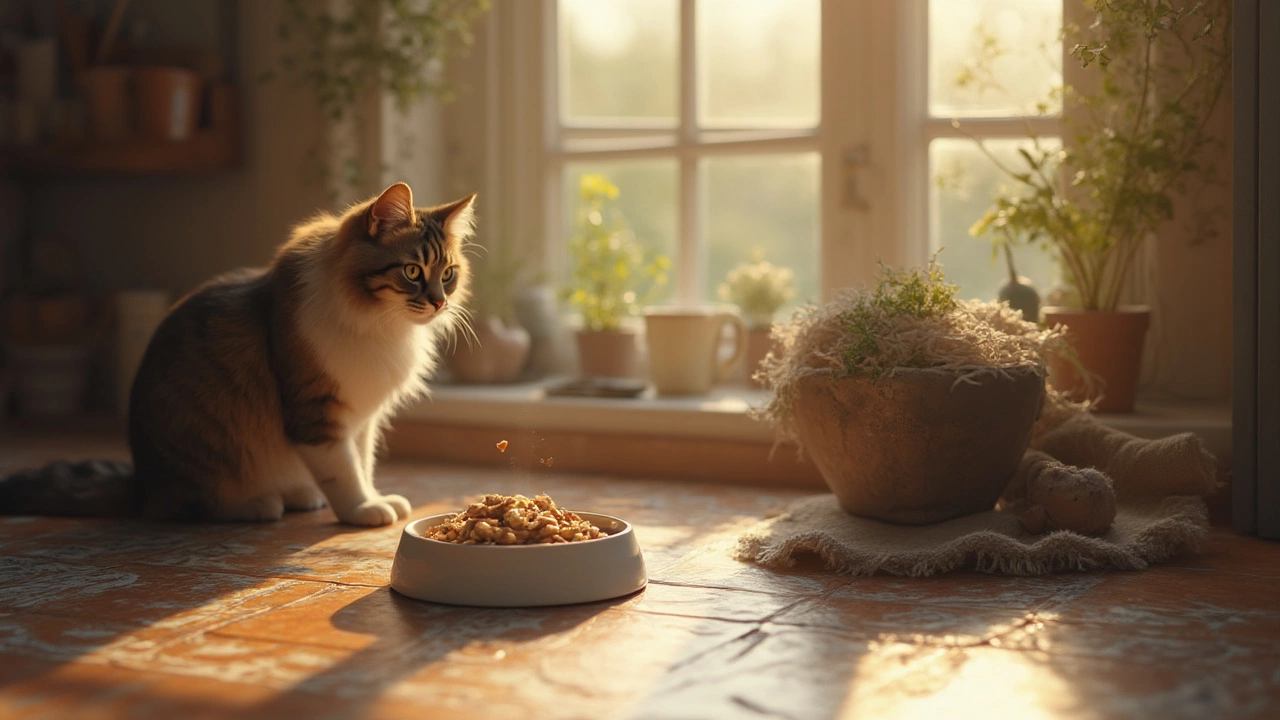Cat Meal Times: Simple Feeding Tips for Happy Cats
Getting your cat's meals right can feel like a puzzle, but it doesn't have to be. Whether your cat is a picky eater or a steady grazer, a clear schedule helps keep weight, energy, and mood on track. Below you'll find straight‑forward advice you can start using today.
Why a Feeding Schedule Matters
Most owners think cats can eat whenever they want, but regular meals give you control over calorie intake and make it easier to spot health issues. A set time each morning and evening lets you compare appetite day to day – a sudden drop could mean a dental problem or illness. For kittens, three to four small meals spread across the day provide the steady fuel they need for rapid growth. Adult cats usually do fine with two meals, but some thrive on three smaller portions if they tend to overeat.
Choosing Dry vs Wet Food
Dry kibble is convenient and helps keep teeth clean, yet it can be low in moisture. Wet food adds hydration, which is crucial for cats that don't drink much water. A mix of both gives the best of each world: dry for crunch and easy storage, wet for moisture and texture variety. Look for products with real meat as the first ingredient and avoid excessive fillers like corn or wheat.
Portion sizes depend on age, weight, and activity level. Most brands list a daily calorie range on the bag – use that as a starting point and adjust based on your cat's body condition score. If your cat is chubby, trim the portion by 10‑15 % and add a short play session. If they're skinny, increase the serving gradually and consider a higher‑protein formula.
Nighttime feeding is another common question. Cats are natural hunters, so they often prefer a small snack before bed. Offering a tiny portion of wet food at night can keep them satisfied without overloading calories. Just make sure it’s not a full dinner – the main meals should stay in the morning and early evening.
Free feeding (leaving dry food out all day) works for some cats, but it makes it hard to monitor intake. If you choose free feeding, pick a low‑calorie kibble and limit the bowl to a fixed amount each day. Rotate the bowl location every few days to keep your cat interested.
Remember to freshen water daily. A water fountain can encourage drinking, especially for cats on a dry‑food heavy diet. Check the bowl for hair and debris – clean water is a subtle but powerful health boost.
Finally, keep an eye on any changes in appetite, weight, or stool. Small tweaks in meal timing or food type can solve many issues, but persistent problems deserve a vet visit. With a simple schedule, balanced dry and wet meals, and fresh water, you’ll set your cat up for a happy, healthy life.
Posted By Bryndle Redding On 28 Jul 2025 Comments (0)
How Often Should You Feed Your Cat? Best Daily Feeding Schedules Explained
Curious about how often your cat needs to eat? Learn the best daily feeding schedules, what affects meal frequency, and tips for a happy, healthy cat.
READ MORE